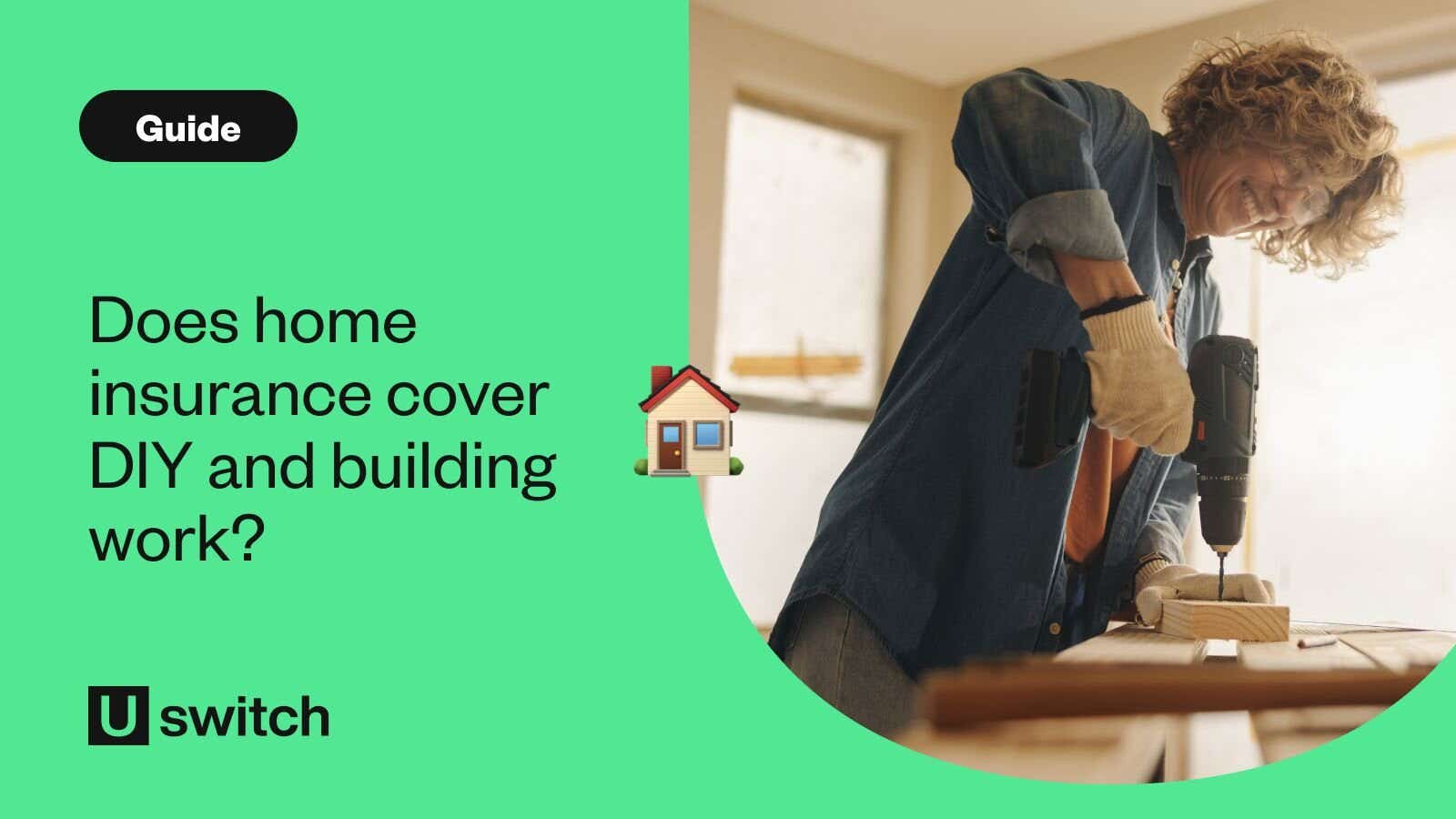Does home insurance cover DIY and building work?


Is DIY covered on standard home insurance?
Many standard home insurance policies will cover minor DIY work, but the level of protection can vary depending on your provider and the scale of the job. Typically, tasks like putting up shelves or repainting a room will be covered. But if you cause damage while doing it, or if the work involves plumbing or electrics, you may not be covered unless you have extra protection.
Before you break out the toolbox, it’s worth checking the terms of your home insurance policy and contacting your insurer to clarify any grey areas.
What types of DIY are covered on standard home insurance?
DIY that’s generally covered includes:
- Painting and decorating
- Putting up flat-pack furniture or shelves
- Replacing door handles or light fixtures
- Laying down laminate flooring
However, if you accidentally damage a wall, pipe or wiring during your DIY, that might not be included in your standard policy unless you’ve added accidental damage cover.
DIY and accidental damage cover
Standard policies usually don’t cover you if you make a mistake during your DIY project. That’s where accidental damage cover comes in.
This optional extra can protect you against damage caused by a DIY slip-ups like hammering a nail into a pipe or dropping a paint tin on your carpet. If you’re planning to take on any ambitious projects, it’s might be worth considering upgrading your policy.
You can learn more about how this add-on works and whether it’s right for you in our accidental damage guide.
Building work and home insurance
Bigger jobs like extensions, garage conversions or knocking through walls are a different story altogether. These kinds of projects could affect the structure or safety of your home, which might put your insurance at risk if you don’t inform your provider beforehand.
Doing significant building work without notifying your insurer could invalidate your policy, meaning you wouldn’t be covered if something goes wrong.
What types of building work are covered by standard home insurance?
Generally, standard home insurance doesn’t cover structural renovations or large-scale changes to your property. If you’re planning any of the following, you’ll likely need extra protection:
- Structural alterations (e.g. knocking down or adding walls)
- Loft or garage conversions
- Home extensions or new builds
- Installing central heating or rewiring
In some cases, your insurer might cover smaller alterations if carried out by a qualified tradesperson. Always check your policy and speak to your provider first.
Do I need additional home insurance cover for DIY and building work?
For bigger jobs or anything involving risk to your home’s structure, it’s best to explore specialist renovation insurance or builder’s risk insurance. These can protect your home during the construction period from issues like fire, theft, or water damage.
If your home is classed as ‘non-standard’ due to the work you’re having done—such as having it unoccupied for a long period—you might need non-standard home insurance to stay protected.
It’s also worth asking your contractor if they have their own insurance. Builders and tradespeople should carry public liability and professional indemnity insurance. If not, you could be liable for any damage or accidents that happen on-site.
While you’re making changes to your home, it’s also a good opportunity to review your overall policy and make sure your home’s security is up to scratch—especially if you'll be away while work is being done.
Compare home insurance quotes
See a range of home insurance quotes in just a few minutes when you compare with Uswitch
FAQs
Is home insurance and building insurance the same?
Home insurance is a general term that often includes both buildings and contents insurance. Building insurance specifically covers the structure of your home, while contents insurance protects your belongings.
What does building and contents insurance cover?
Building insurance covers the physical structure of your home, like walls, roof, and permanent fixtures. Contents insurance covers movable items like furniture, electronics, and personal possessions. Together, they offer full protection for your home and belongings.
Can DIY invalidate my home insurance policy?
Yes, DIY can invalidate your home insurance if you cause damage not covered by your policy or fail to inform your insurer about significant work. Always check your policy and notify your provider before starting.
Can building work invalidate my home insurance policy?
Yes, building work can invalidate your policy if your insurer isn’t made aware. Most policies require you to inform them about structural changes or renovations to ensure you stay covered throughout the work.